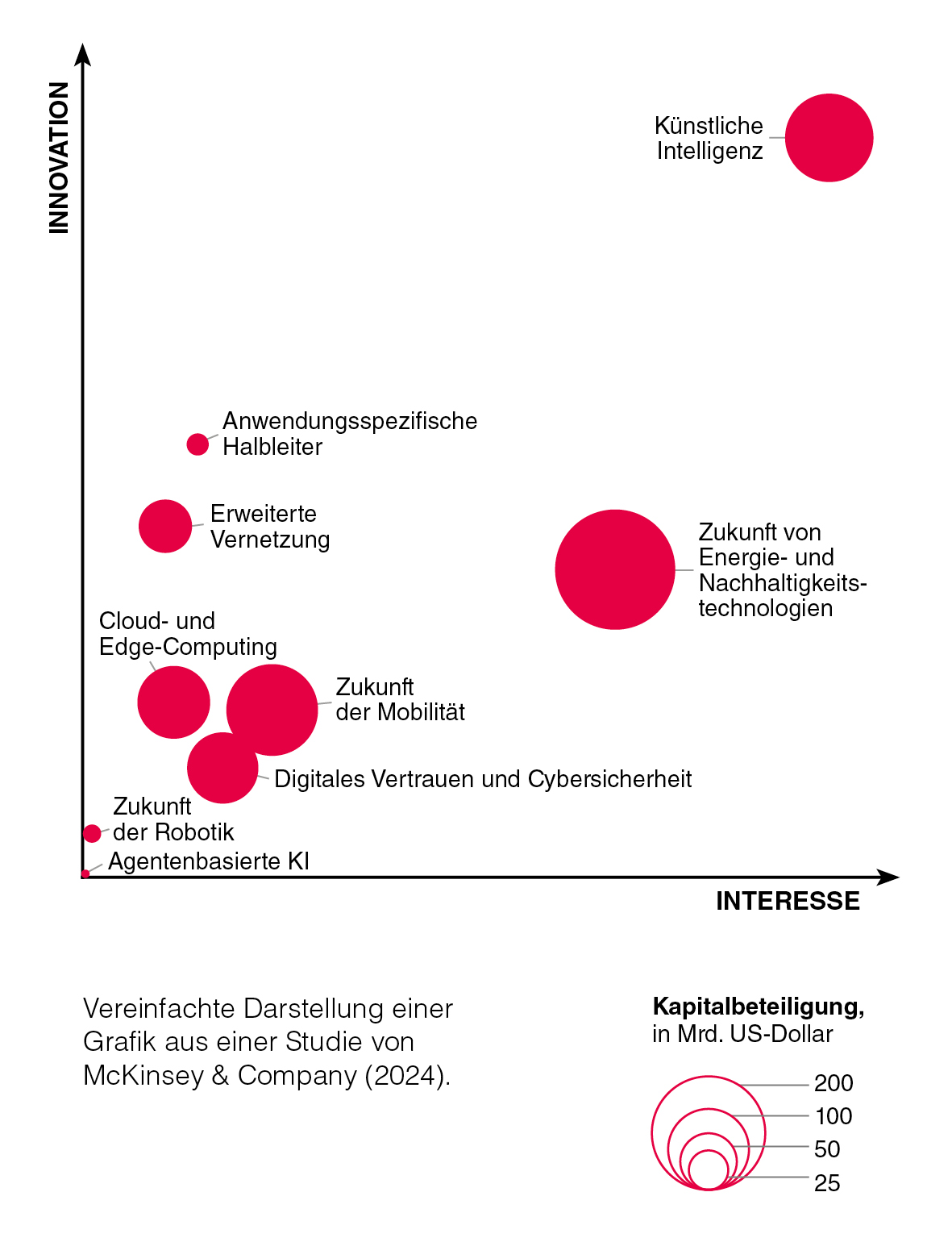Text Ulrich Sendler ––– Photography
Trend analyses conducted by Boston Consulting Group (BCG), Deloitte, Forrester, IDC, Gartner and McKinsey have all reached the same conclusion – the frenzied hype surrounding generative AI is already waning again. In Gartner’s Hype Cycle for AI, GenAI has already passed the peak of inflated expectations. Fundamental decisions need to be made about the next steps for industrial use. This does not mean deciding for or against any particular system or technology, but instead deciding on the fundamental approach when starting out with AI.
Focusing on a small number of big initiatives
Last year, a lot of money was once again invested in using generative AI as a first step in AI. However, according to Gartner, only 30 percent of CEOs were happy with the return on their AI investments. Meanwhile, according to the BCG AI Radar survey, most initiatives “aim too low” and primarily at short-term productivity gains. In contrast, successful companies – a quarter of the 1,800 executives surveyed according to BCG – focused on an average of 3.5 initiatives (versus 6.1 for the others), which are now being scaled up. According to BCG, leading companies focus 80 percent of their AI investments on reshaping critical functions and developing new products and services.
That makes sense. For example, one approach might involve using an AI initiative to cut electricity consumption dramatically across an entire production area, but not just for reasons of costs, carbon footprint and sustainability. When AI is rolled out, IT in particular races to unmanageable levels of electricity consumption. An initiative of this kind would therefore have an immediate and widespread effect, while also improving conditions for future AI initiatives.
Focusing on AI agents
In its Technology Trends Report 2025, McKinsey no longer distinguishes between applied AI and generative AI. It also accords top priority to agentic AI.
What is agentic AI? An AI agent is a system that uses GenAI, but does not only deliver results in text or image form. Instead, it searches through more or less any data source autonomously and without human intervention and can even launch other software systems in order to complete the tasks it has been set. This is heading in the direction of autonomous systems, at least to some extent.
Something that is of particular interest to industry is the fact that even though AI agents use trained models from the USA and China, they very specifically apply these models to smaller regional or even in-house data sources, achieving excellent results very quickly and keeping AI hallucinations to a minimum. These data sources could be key industrial data, for example. The general term for this process is retrieval-augmented generation (RAG).
According to the Trends Report 2025, global equity investment in agentic AI totalled 1.1 billion US dollars in 2024 alone. What’s more, online postings for jobs relating to agentic AI development increased by an incredible 985 percent from 2023 to 2024. All other studies also suggest that AI agents are being prioritised.
Focusing on AI-ready data
In the Gartner Hype Cycle for AI, AI-ready data is already at the peak of the cycle. This means that, without the right data in standardised formats, there is no useful AI that will create added value. In other words, simply letting generative AI loose on data lakes composed of unstructured data means wasting a lot of time with little value creation to show for it.
Standardising existing data and identifying standardised data sources has been the aim of industrial digitalisation for quite some time now. Those who have put in the work will now also be the first to reap the biggest rewards from their launch into AI. And for those who have put it off, it is an excellent opportunity to shape their launch into AI with the correct data and state-of-the-art processes.
